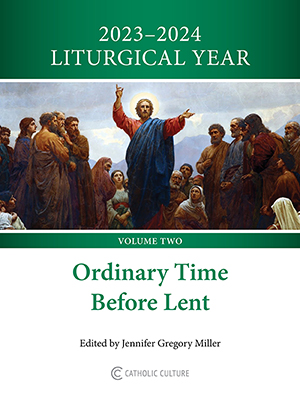Catholic Recipe: English Soul Cakes IV
INGREDIENTS
- 1 scant tablespoon or 1 (1/4-ounce) package active dry yeast
- 1/4 cup warm water (about 110°F)
- 1 cup milk
- 2 tablespoons unsalted butter, softened
- 2 tablespoons granulated sugar
- 2 teaspoons ground cinnamon
- 1 teaspoon salt
- 4 to 5 cups unbleached all-purpose flour
- 1 large egg
- 1 tablespoon cold water
- Additional granulated sugar, optional
Details
Yield: 24 Large Buns
For the Glaze:
Prep Time: N/A
Difficulty: ★★★☆
Cost: ★★★☆
For Ages: 11+
Origin: British Isles
Food Categories (1)
Feasts (3)
The Roman Catholic Church, in its efforts to "baptize" the pagan celebrations, changed All Saints' Day from May to November 1 to honor all of its saints. Years later the Church set All Souls' Day on November 2 to honor the dead and allowed bonfires, parades, and dressing up as saints, angels, and devils.
Eventually all these customs mixed together and became known as All Hallow Even, then All Hallows' Eve, then Hallowe'en, and finally Halloween. The custom of dressing as black cats, evil spirits, ghosts, skeletons, and such prevailed, and the sacrifices changed to the giving of small cakes known as Soul Cakes. These cakes were given in return for prayers for departed souls. Children would go from home to home chanting:
Soul! Soul! For a souling cake. I pray you, good missus, a souling cake! Apple, or pear, or plum, or cherry Anything good to make us merry.
These buns are placed close together on the baking sheet or pan so that they rise together, which creates soft-sided buns.
The buns look as if they were made with whole-wheat flour, but they're not. The brown color comes from the addition of cinnamon to the dough.
DIRECTIONS
By Hand: In a large bowl, sprinkle the yeast in the water to soften. Heat the milk to 110°F and add it to the yeast along with the butter, sugar, cinnamon, salt. and 2 cups of the flour. Beat vigorously for 2 minutes. Gradually add the remaining flour 1/4 cup at a time until the dough begins to pull away from the side of the bowl. Turn the dough out onto a floured work surface. Knead, adding flour a little at a time, until the dough is smooth and elastic.
By mixer: In the mixer bowl, sprinkle the yeast in the water to soften. Heat the milk to 110°F and add it to the yeast along with the butter, sugar, cinnamon, salt, and 2 cups of the flour. Using the mixer paddle, beat on medium-low speed for 2 minutes. Gradually add the remaining flour 1/4 cup at a time until the dough begins to pull away from the side of the bowl. Change to the dough hook. Continue to add flour 1 tablespoon at a time until the dough just begins to clean the bowl. Knead 4 to 5 minutes on medium-low.
By Food Processor: In a cup or small bowl, sprinkle the yeast in the water to soften. Heat the milk to 100°F and add it to the yeast. In the howl of the food processor fitted with the dough blade, combine the butter, sugar. cinnamon. salt, and 4 cups flour. Pulse 4 or 5 times to combine. With the food processor running. add the liquid ingredients as fast as the dry ingredients will accept them. If you hear a sputtering sound. pour the liquid slower. As soon as all the liquid is added. turn the processor off. Check the liquid-to-flour ratio. Pulse until the dough forms a ball, then process for exactly 60 seconds.
By Bread Machine: Put the water, milk. and butter in the bread pan. Add the sugar. cinnamon, salt, and 4 cups flour. then sprinkle with the yeast. Select the Dough cycle and press Start. While the dough is mixing, check the liquid-to-flour ratio. The machine stops after the kneading cycle. You may let the dough rise in the bread machine or a bowl.
First Rise: Put the dough in an oiled bowl and turn to coat the entire ball of dough with oil. Cover with a tightly woven towel and let rise until doubled. about one hour.
Shape: Turn the dough out onto a lightly oiled work surface and divide into 24 equal pieces. Shape each piece into a ball and place on a parchment-lined or well-greased baking sheet about 1/2 inch apart. The buns can also be placed in 2 well-greased 9 by 13-inch baking pans.
Second Rise: Cover with a tightly woven towel and let rise for 45 minutes.
Preheat Oven: Final Preparation: Whisk the egg and cold water together to form a glaze and lightly brush it over the tops of the buns. Sprinkle the buns with granulated sugar if using.
Bake and Cool: Bake for 20 minutes until the internal temperature of the buns reaches 190°F. Immediately remove the buns from the baking sheet and place them on a rack to cool.
NOTE: These buns freeze nicely for up to 6 months and can easily be reheated. Wrap the thawed buns in foil and reheat in a 375°F oven for 7 to 10 minutes.
Recipe Source: Celebration Breads: Recipes, Tales, and Traditions by Betsy Oppenneer, Simon and Schuster, 2003
Shop: Roman Catholic "RC" Brand Original White Logo Collection Classic Long Sleeve Tee | Multiple colors and sizes available!
Free eBook:

|
| Free eBook: Liturgical Year 2023-2024, Vol. 2 |





